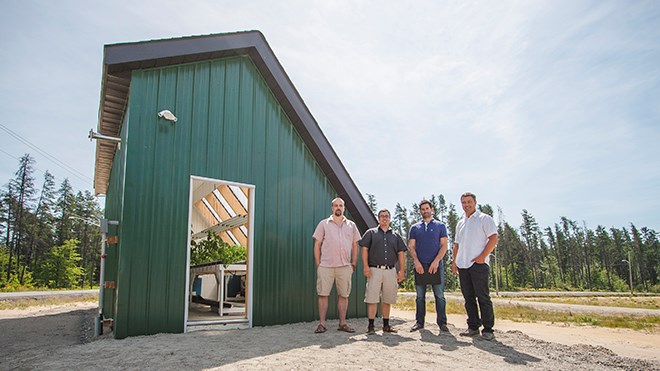Using state-of-the art design and technology, an all-season greenhouse is now bearing fruit and vegetables, including cucumbers, lettuce, tomatoes, and peppers, in Espanola.
Cambrian College’s applied research division, Cambrian Innovates, along with its partners, Ontario Centres of Excellence (OCE) and Greenhouses Canada, a partner of Helios Whitefish River First Nation, have collaborated to design, build, and test this all-season greenhouse using energy-efficient techniques and materials.
A commercial scale model of this greenhouse will begin construction in Whitefish River First Nation during the spring of 2016.
The college said its "innovative" greenhouse will enhance food security and empower the community to supply its own produce year-round.
“A major barrier for local food production in northern boreal climates is the short growing season and the heating cost associated with prolonging the growing season,” said Jeff Scharf, who is one of founders of Greenhouses Canada and president of Helios Whitefish River First Nation.
“The objective of this project was to empower local communities so that they have an affordable means to grow fresh produce year-round.”
The main challenge for all-season greenhouse growers in Northern Ontario is heating costs over the winter months, Cambrian said in a news release, which leaves only five to six months of growing in the North. The building techniques and materials used in this project reduce energy needs, making regional food production a viable industry, the college said.
The project was developed using solar thermal wall construction, in-ground heat batteries and insulation to prevent heat loss in winter. The greenhouse itself was designed and built by Cambrian College faculty and students from the Energy Systems Technology and Carpentry Renovation Techniques programs.
Professors, Dr. Kameal Mina and Jeff Lapierre led the students in their work.
Six new jobs have been created since the greenhouse was completed in spring 2015. Helios Whitefish River First Nation hired one of the students who worked on the project and five other people for fabrication and sales.
Join Sudbury.com+
- Messages
- Post a Listing
- Your Listings
- Your Profile
- Your Subscriptions
- Your Likes
- Your Business
- Support Local News
- Payment History
Sudbury.com+ members
Already a +member?
Not a +member?
Sign up for a Sudbury.com+ account for instant access to upcoming contests, local offers, auctions and so much more.
